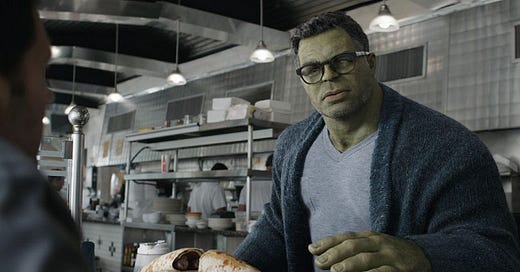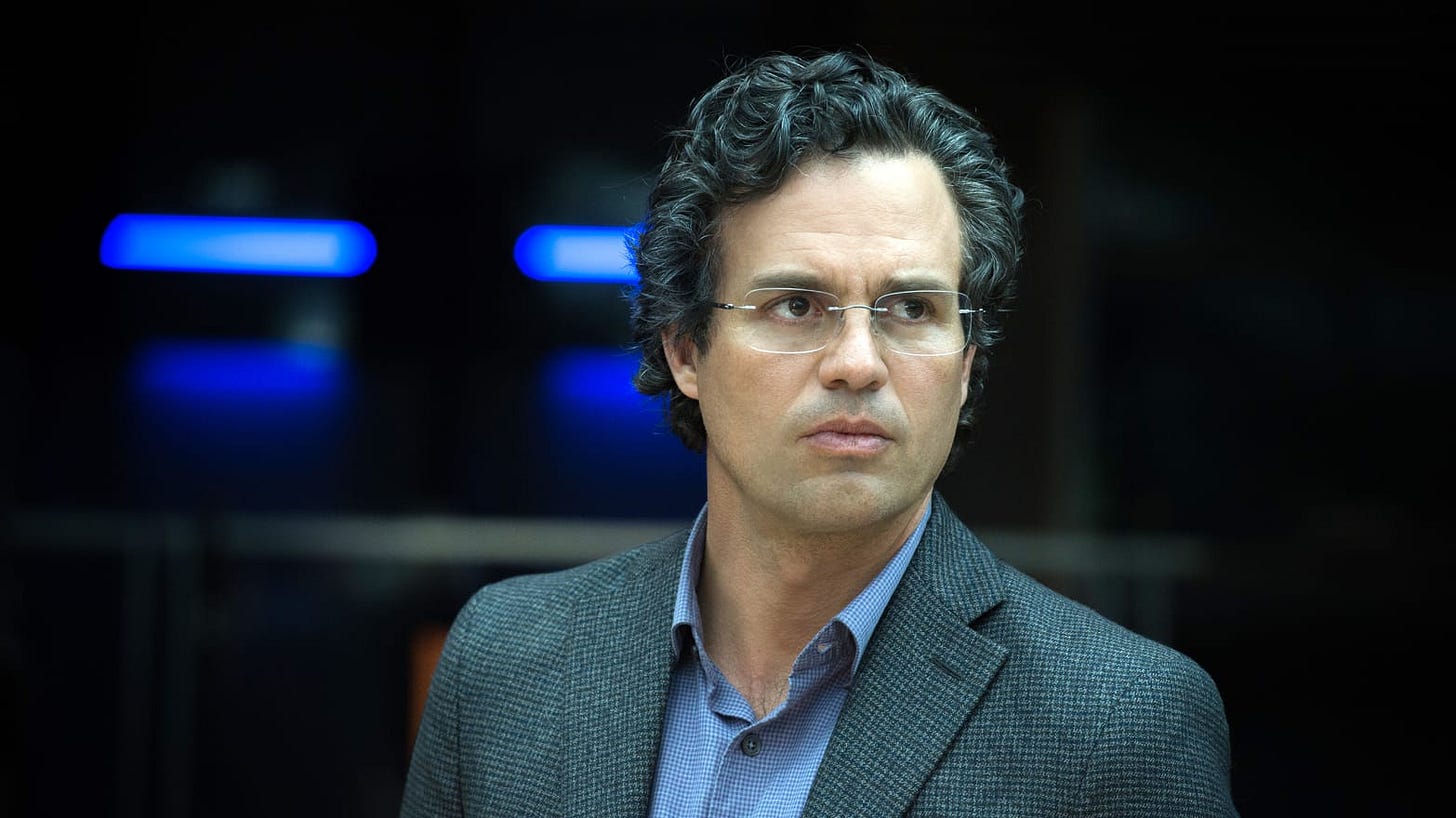Hi everybody,
This is a little essay I began before the election. Since the election I have found myself occasionally consumed with (terrible, irrational, all-consuming) rage. My rage is sometimes directed at obvious suspects. Sometimes it’s directed at other random, unrelated stuff. Anger’s everywhere of late — and understandably. As has begun for some of you, this time of year can involve congregation with people whom you may find upsetting. Every day in this country, as a trans person, I feel more and more cause to feel enraged. Therefore, I thought I’d share this reflection on my own anger and the other parts of myself I do not like.
I am not an angry person, not all the time. That said, if prompted and if circumstances are right, I can absolutely become enraged. The why and the how of me having such a propensity inside, it is and it isn’t relevant. I’m someone with a domestic abuse background, someone whose young life was absolutely set in the key of screaming. So to me it’s zero surprise that I am this way. But these days, attempting to live life in a very different mode, my sometime rage can be pretty inconvenient.
Me going into Hulk Mode, it helps nobody. It doesn’t help me. It doesn’t help my relationships. It doesn’t help my career. It doesn’t help my pets. It doesn’t help whatever situation has set me off — a shitty driver, an unresponsive printer, a cat abruptly stabbing me in the thigh. How quickly I will shout and scream and swear, how thoughtlessly. Or if someone (some fool!) has suddenly engaged me in an argument, I’ll feel the quick temptation to really go there, to become irate, to fight. My I’m especially likely to just snap if I’m feeling already depleted or emotionally maxed out.
I went to a new doctor’s office a few months back and to my dismay was immediately presented with an ACE worksheet. As some readers will know (and others will not), the Adverse Childhood Experiences or ACE questionnaire is a way of tabulating basically how fucked up you got as a kid. This helps measure how impacted you might be, therefore, mental health-wise and health-wise. So goes the lasting damage of stuff like abuse and neglect.
I’ve never liked such schema, probably because when I fill out such forms I know I come across looking pretty doomed. My score will be high, no matter if I try to shave off a point or two in my mind, perhaps mentally scanning through terrible memories and trying to downplay how bad some actually were. I have a high score because of my experiences and there’s no real way around it. My body and mind indeed reverberate with the impact of all that trauma, even today (as indeed is often the focus of these posts). The ole body keeping the score.
What to do, therefore, with my rage? What to do with any other parts of ourselves we don’t like, however we came to be as we are? My annoying parts are myriad — the anxiety, the depression, to name two. How does one live even when one faces many challenges (internally)? This is the question I have followed for much of my work, and you could say this question has been a great focus of my life. Those of us with high ACE scores, we’ve often survived a lot of hard shit. However crazy-sounding, our internal experiences are often perfectly reasonable responses to our lived circumstances. For a long time — arguably starting with the eight years I wrote my first book — I have been contemplating the question of how people like me might encounter a more compassionate world, given this whole situation.
I have found that the work starts at home, by which I mean, inside my own head. Hence over one thousand days ago, I finally sat down and started meditating. Previously, I had long found meditation unbearable, more or less, as I’ve written about here before. The full story of what I went through and and why I finally began meditating will be told in this book I’m writing about the future of my mental health care. But long story short, I finally sat down and stared into the internal darkness. I listened to the chaos inside.
Which is to say: I finally took myself on, including my terrible interior, with a sort of determination I hadn’t ever previously mustered. Now I do not let a day pass when I do not meditate, as I’m often writing about here. Every single day I make time for this pause, usually for fifteen minutes or twenty. Sometimes only ten minutes, or even just five. As I’m often discussing here, I do a lot else in the service of self-care, by which I mean, trying to calm myself down and to really tune into myself and get embodied and all that whatnot. But my self-care routine’s central pillar, always, is that daily meditation. That reset.
Last winter I watched a lot of the Marvel Cinematic Universe, research for the electroshock piece (I was specifically interested in Bucky Barnes aka the Winter Soldier, who receives shock). My friends would be surprised when they heard I was watching the MCU, much less so when they heard it was for research for a piece. Maybe because suffice to say I’m not really the watches-superhero-movies type of nerd but I am the type of nerd who happily will watch anything if I’m taking notes for research.
Anyway I was surprised by how much I enjoyed particular aspects of the MCU. I was especially a taken with Mark Ruffalo’s portrayal of Bruce Banner aka The Hulk.
In particular, I found myself attached to the struggle Bruce has throughout the movies. He is a split self, attempting at times to cement himself in one reality or another, feeling it challenging to oscillate between these two extremes. In the earlier Avengers movies, Bruce learns to summon Hulk on command for the sake of world-saving. After such instances, though, Bruce feels tremendous shame about the destruction this aspect of himself can cause.
During Thor: Ragnarok, it’s revealed that Banner has become trapped on an alien planet in Hulk mode for two years. After being rescued and summoned back to himself, Banner is totally disturbed by this lapse of time and reality. He now resists summoning Hulk at all, even for battle. He confesses he fears that if he allows himself to become Hulk once more, there will be no more going back. He fears if he turns towards Hulk, the Hulk will finally consume him.
Ultimately, though, the character of Bruce Banner comes to a sort of truce with his Hulk. In the final movies, his look is one that marries both Bruce and Hulk, a sort of midway-through-the-Animorphs cover. He is still green but softer, wears the glasses and a giant cardigan.
I admit I got emotional the first time I saw this combination Hulk-and-Banner. To me, it’s such a visual metaphor for the only path forward I do see, as regards my internal rage, and all the other parts of myself I don’t like.
More recently I put on the older The Incredible Hulk with Ed Norton (which incidentally features a sequence wherein the Hulk is summoned using electroshock-like-technology, a tidbit that, like so many, didn’t make it into my piece). This movie also really underscored this relationship between mindfulness practices and staying in relative control of our sometime Hulks inside.
It begins in Brazil, Banner having fled the States and a lot of mayhem in his wake. He has now commenced a many-consecutive-day streak of meditation in an attempt to remain himself.
I can’t shun my less flattering parts. I can’t ignore them either. Attempting to do so will only make them more uncontrollable, I’ve found. Instead, I must work to fully accept them, which is to say I must accept myself as I actually am. Which includes coming to terms with my past and my present. Which means continuing to learn to sit with my actual self.
From a psychological perspective, anger is a ‘secondary emotion’ (as one of my therapist-type-people sometimes reminds me). By which is meant: Anger is often masking for another primary emotion, namely sadness and/or fear. I find this is true when I dig down into whatever I think angers me. When I pour it a cup of tea and ask it to calmly speak its mind, rather than attempt to shut it out or shout at it to beat it, scram.
This is hard of course. Especially if I do not have time to catch the Hulk before he awakens and overtakes. Again, daily meditating helps because helps slow oneself down, in general. And it builds that skill of being mindful of how one actually is doing, for real. Turning inward, whether in therapy and / or a JournalSpeak practice and / or deep exchanges with (trusted, willing and emotionally capable) friends is all stuff that, slowly, over time, can help one live less reactively, more consciously.
Don’t get me wrong; I’m not perfect, these days. But I am better. As JournalSpeak creator Nicole Sachs is often saying, life is a choice between what hurts and what hurts worse.
Meditation is hard, yoga is hard. Doing JournalSpeak, this unfiltered type of writing, it’s a total pain in the ass. Most days still I don’t really want to do such practices. I’ll spend hours avoiding them, puttering around finding excuses to not. It’s all hard, but I know that for me, living life as I did before, that was way worse.
What’s Helping Today: I’m still feeling the wonderful afterglow of our glorious (very trans and queer) Not Thanksgiving celebration last weekend. I roasted a goose raised by our farmer friend, who brought porchetta. I mashed rutabagas and made stuffings and salad and three pies. Many joined, connections new and old.
I was reminded, as ever, how coming together for such occasions is healing. Especially during these days that feel so dark with cause for fear and for sorrow.
Take care,
Sandy
p.s. Surprising even myself, I did join Bluesky the other day. I admit I’m pretty anxious about joining a social media platform again, but I know there’s reasons for someone in my line of work to be on one as well. I had initially quit Twitter largely because of transphobes, but also because the site really provoked my anger. So we’ll see how I do now, phasing something like this back in. My thought is I’ll try to be intentional about how I approach it, this go around (not unlike driving, which I’m also doing more of these days). Anyway if you like, you are welcome to follow me on there.
p.p.s. I was on People First Radio, a show out of British Columbia, discussing my aforementioned Believer piece about electroshock.
p.p.s. As ever, thanks for reading this newsletter. To send in a question for a future advice column email whatshelpingtoday@gmail.com. If you feel so inspired, I’d appreciate if you shared or forwarded this to a potentially-interested friend.








